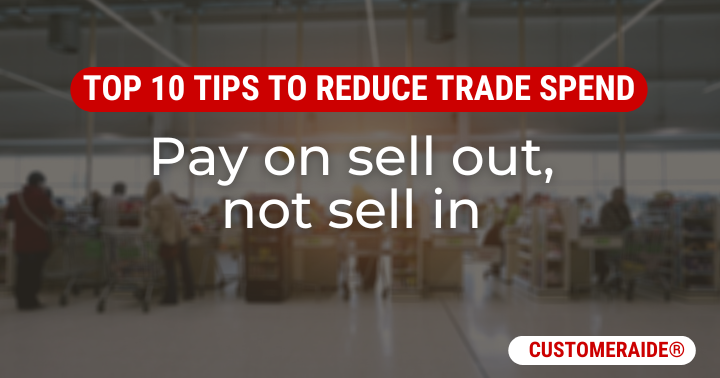
Often we may secure a huge volume order with our customer which on the surface seems like a win, but part of the negotiation will include a locked in level of promotional allowance for the stock ordered.
If we structure our trade spend investment based on sell out volumes and not sell in volumes, we will be paying for performance. It is therefore a compelling incentive to both our customer and to us as a supplier, to work together to maximise sell out – which is what we both want to achieve, to grow our categories and brands with shoppers.
Our customer works hard to grow overall category margin and is in a strong position to ask you for trade spend when placing an order. If he/she can underpin the risk associated with buying in additional volume with pre-agreed allowance payments and generate additional category margin, this is a desirable position to be in, so our customer will want to negotiate this upfront. What we need to do is link promotional allowances to customer sell out performance and jointly focus on our customer’s shoppers and therefore spend as effectively as possible.
We can reduce and optimise our trade spend if we can negotiate to invest based on what our customers sell out, not what they buy in.
To do this we will often have to agree with our customer that a retrospective promotional allowance or payment will be made. To structure our investment proposition for sell out there are three key considerations:
- What % of the total promotional volume has sold out during the promotional period, versus what was sold in?
- How many weeks of buying in activity are there, versus in store/ online promotional activity?
- How accurately can we/ our customer measure sales out; in order to correctly calculate promotional payments to our customer?
Incentivising our customer and jointly focusing on in store or online promotional activity to maximise sell out, creates the right momentum for our customer’s shoppers, and we are likely to achieve the best return on investment for our trade spend.
The objective is not to spend less, but to spend to achieve the best return on investment – ask yourself: are we investing in sell out volumes?
Next in our ‘Top 10 Tips to Reduce Trade Spend’ series we’ll be thinking about the importance of linking trade spend investment to performance, making sure that the bulk of our investment is conditional. If you have any questions or comments please get in touch.